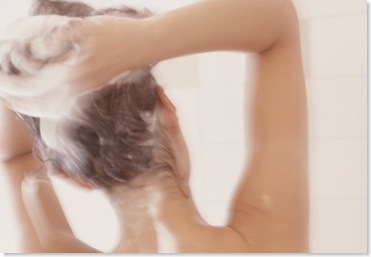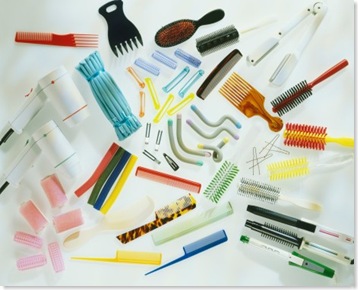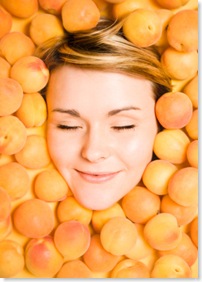pH of shampoo - magical-simple-solution to ongoing problem

Shampoo is the number 1 Searched for hair product on Google's big board of HAIR search "tags" and lately "sulfate-free shampoo" has been bumped up to number 2 if you can believe that - - - makes me proud. Which means it comes from you, I like knowing what you want to know more about so I am going to stick with the Big G for reference. This will be a gentle description of the term pH, which is so important when "shine" "health" and "color-lasting" are your goals with your hair. Shampoo is that product that is on your hair more than any single other product, some of you use it every single day. With that being the case I feel I need to teach you all I can about it, which is a new concept for me. When I discovered how important it was on Google's scale of what 'you' look for under hair, I started to re-think my former stance on it. See, I can change - I love technology ever since I started this Blog it has become a new passion of mine. What a lot I have to learn though.
I am going to start on the pH scale as I feel it is so very important to understand in relation to shampoo and hair care products in general . I never know where to start on this - - again its the whole "chicken and egg" predicament, lets see how I do.
Potential Hydrogen (pH)

Understanding what pH is and how is affects the skin and hair is essential to understanding most of the services that you get in a Salon or that you perform on your own noggin. This will be a brief overview of pH and how it works so then I will go right into pH and shampoos. I'm using a couple textbooks to help me with this, as much as I understand it, I tried writing my own post on the subject and ended up trashing it, my version was so confusing, I gave it to my neighbor to read and he had the most confused look on his face. So we will go with this and see how it works. Its not necessary to fully understand pH, but I would like you to at least have an idea what it is for future reference. Having the proper pH shampoo makes ALL the difference in the world, as far as tangling and hairs condition at the end of the shampoo.
Many of you have complained about a particular shampoo that is Sulfate-free - thinking the sulfate-free is the cause, which couldn't be farther from the truth. The cause of very tangle-y hair post-shampooing is: improper pH of the shampoo, which is such a simple thing to fix. Certain manufacturers totally understand it, like Kera Care, he has all of his shampoos at the exact proper pH, BUT... the owner is Old School and is just now starting to understand that sulfates are bad, so until he gets rid of SLS I simply do not and cannot in good mind, recommend it. I've written him numerous notes and others have has well, I'm very hopeful he has a SLS-FREE shampoo coming out very soon -- which would be the answer to everyone's question: what's the very best shampoo to use. Again, tossing to the fact that I feel the 2 most important factors are the surfactant used and the pH when the formula is complete. They are also reasonably priced, so - - cross your fingers and write the owner a note, http://www.avlon.com/contact%20us.html if you're as gun-ho as some of my followers !
Water and pH
First we need to understand a bit about ions. An ion is an atom or molecule that carries an electrical charge. Ionization is the separating of a substance into ions. These ions have opposite electrical charges... An ion with a negative electrical charge is an anion and an ion with a positive electrical charge is a cation. Now Ions are at the base of that T3 Dryer that is such a big hit now which I will go into at a later date and subject.
In pure water, some of the water molecules naturally ionize into hydrogen ions and hydroxide ions. The pH scale measures those ions. The hydrogen ion (H+) is acidic..the hydroxide ion (OH) is alkaline, pH is only possible because of this ionization of water. Only aqueous solutions have pH, Non-aqueous solutions (oil and alcohol) do not have pH . . . without water there is no pH.
In pure water, every water molecule that ionizes produces one hydrogen ion and one hydroxide ion. Pure water is neutral because it contains the same number of hydrogen ions as hydroxide ions, meaning it is neither acidic nor alkaline. Pure water is 50 percent acidic and 50 % alkaline.
The pH Scale
The terms "parts hydrogen" or "potential hydrogen" are used to describe pH. In fact, the term pH originates from the French term pouvoir hydrogene , or hydrogen power" and means the relative degree of acidity and alkalinity of a substance. Notice that pH is written with a small p and a capital H ( which represents the hydrogen ion, H+) the symbol pH represents the quantity of hydrogen ions.
The pH values are arranged on a scale ranging from 0 to 14. A pH of 7 indicates a neutral solution, a pH below 7 indicates an acidic solution and a pH above 7 indicates an alkaline solution.
The pH scale is a logarithmic scale, this means that in a pH scale, a change of one whole number represents a tenfold change in pH. A pH of 8 is 10 times more alkaline than a pH of 7...a change of 2 whole numbers indicates a change of 10 times 10 or a one hundred-fold change. A pH of 9 is 100 times more alkaline than a pH of 7.
Pure water, with a pH of 7, is 100 times more alkaline than a pH of 5. Since the average pH of hair and skin is 5, pure water is 100 times more alkaline than your hair and skin, even though it has a neutral pH.
Pure water can cause the hair to swell by as much as 20 percent.
pH and Shampoo
Understanding pH levels will help you select the proper shampoo for yourself . Remember, the amount of hydrogen in a solution, determines whether it is more alkaline or acid, is measured on a pH scale that has a range from 0 to 14.
- a shampoo that is more acid can have a pH rating from 0 to 6.9
- a shampoo that is more alkaline can have a pH rating from 7.1 to 14.
- The higher the pH rating ( more alkaline), the stronger and harsher the shampoo is to the hair. A high pH shampoo can leave the hair dry and brittle.
- Now why shampoo's don't have pH ratings printed on them instead of all the other words and BS I will never know, this is one of the key measures of knowing if the shampoo is going to work correctly (of course there are others).
- Ultimate pH for a shampoo you purchase? 5.0 - 6.0
To determine which shampoo will leave your hair in the best condition, I must explain some of the chemical ingredients regularly found in shampoos. Most shampoo's share many ingredients in common. It is often the small differences in formulation that make one shampoo better than another for a particular hair texture or condition.
Water is the main ingredient in all shampoos and commonly is added at the rate of 30-40% of the formula. Generally it is not just plain water, but purified or de-ionized ( ions removed) water. Water is usually the first ingredient listed, which indicates that the shampoo contains more water than anything else. From there on, ingredients are listed in descending order, according to the percentage of each ingredient in the shampoo or formula. This is how it is 'supposed' to be done but I would guess 8 times out of 10 it is not. Regulating hundreds of thousands of beauty products would require every single agency of the government shutting down and helping the FDA, it is virtually impossible, so it basically self-governed and you can imagine how successful and correct that maneuver is.
Surfactants
The second ingredient that most shampoos have in common is the primary surfactant or base detergent. These 2 terms, surfactant and detergent mean the same thing: cleansing or "surface active" agent.
A surfactant molecule has two ends" a hydrophilic or water-attracting "head" and a lipophilic or oil-attracting "tail". During the shampoo process, the hydrophilic head attracts water, and the lipophilic tail attracts OIL, this creates a push-pull process that causes the oils, dirt, and deposits to roll up into little balls that can be lifted off in the water and rinsed from the hair ( see the photos).
Other ingredients are added to the base surfactants to create a wide variety of shampoo formulas. Moisturizers, oils, proteins, preservatives, foam enhancer's and perfumes are all standard components of shampoos. On a previous post I listed 12 or surfactants that are considered safe, I have worked with each one and to be perfectly honest, shampoo's are not my forte...but wanted to just see - feel - smell and observe the materials with hair under the scope - for my own security - in recommending them. I know that probably sounds super UN-scientific, but I feel that is what these super cosmetic chemists - miss. Just plain common sense issues, like the scent of a particular ingredient being so caustic, how could it possibly be gentle enough for hair. Or the texture of this is so rough and the scent so strong, there just has to be a better choice. That is what began my suspicions with Sodium Lauryl Sulfates 7 years ago. When I opened the jar and seriously, could not take a breath of air it was honestly that burning to the skin in my nostrils, . . . that alone was a huge red 'common sense' - flag. Why no one but me - started talking about it, I will never know .
Yes, later there have come many "Safe Cosmetics" organizations ... but they don't do it right either - They go the complete opposite direction and think everything is bad, and that's not at all how it works, either. Not everything is bad or unsafe. . .that is as bad of a generalization as the other groups missing the dangers of SLS - it truly is.
 You can't 'ban' everything, that is the way politicians work...we have no room for that in cosmetics. I just want to begin explaining this to you, its a big concept but many of you seem eager to learn it, I thought it would bore you all so earlier I decided not to open the bag, besides its bad for business . . . all the big companies won't advertise on my site because I say Boxed hair color kits are horrific - but look at me will ya ? ? I can't keep my mouth shut! It would make my life a whole lot easier, if I just conformed and didn't talk about them - I would be making a lot better income off of advertising on this site. This has now become a very well known hair web site, I get lots and lots of traffic everyday without the big boys advertising on my site - but I am trying to break into the next level and get some big advertisers on my site, it won't happen as long as I leave the info up about how bad boxed hair color kits are. But If I don't tell you the truth, you will never get it, and that really is pointless to me. So . . . there is the truth. I need your support and I need to know you all want to know the truth in this info - so I know I am doing it for you and you care.
You can't 'ban' everything, that is the way politicians work...we have no room for that in cosmetics. I just want to begin explaining this to you, its a big concept but many of you seem eager to learn it, I thought it would bore you all so earlier I decided not to open the bag, besides its bad for business . . . all the big companies won't advertise on my site because I say Boxed hair color kits are horrific - but look at me will ya ? ? I can't keep my mouth shut! It would make my life a whole lot easier, if I just conformed and didn't talk about them - I would be making a lot better income off of advertising on this site. This has now become a very well known hair web site, I get lots and lots of traffic everyday without the big boys advertising on my site - but I am trying to break into the next level and get some big advertisers on my site, it won't happen as long as I leave the info up about how bad boxed hair color kits are. But If I don't tell you the truth, you will never get it, and that really is pointless to me. So . . . there is the truth. I need your support and I need to know you all want to know the truth in this info - so I know I am doing it for you and you care.  There are many "natural" ingredients that are very harsh as well, that just should not be what you look for. "Natural" and "organic" are the most fought about topics / the most argued over words in the cosmetics business right now. Every single month in my trade magazines will be another view on what one more group thinks the word "natural" and "organic" means - - please take that into consideration. Those words will never be the answer to the problem, so drop that theory.
There are many "natural" ingredients that are very harsh as well, that just should not be what you look for. "Natural" and "organic" are the most fought about topics / the most argued over words in the cosmetics business right now. Every single month in my trade magazines will be another view on what one more group thinks the word "natural" and "organic" means - - please take that into consideration. Those words will never be the answer to the problem, so drop that theory.Technically as I've said before . . . water is not really 'technically' natural - as funny as that sounds ... it does not come from nature - - it comes from the heavens. With scientists you should hear them fight over the word, it will simply - - - NEVER BE SOLVED - - ever. I feel both sides have valid points, so its simply time to move on from it.
Remember that there are also harsh and incompatible ingredients in nature for your hair, its needs to be a very simple study and honest reviewed by a competent cosmetic chemist that is not funded by any of the big corporate manufacturers, that is hard to find.
Begin and never stop reading the ingredients on the label, you must - you must - you must. I fully realize they seem intimidating, BUT that is how I started and a very famous cosmetic chemist told me when I began, just start reading and saying them - over & over & over, they begin to sink in eventually. . .

. I never took chemistry in school I was terrified of the "word'', but you know what? He was 100% correct. I couldn't pronounce Sodium Lauryl Sulfates, and now I now the names of about 15 by memory... remember I was raised a jock not an academic - so there is no one this is more foreign to, than me. It will make you feel proud of yourself the first time you pipe off the name of one of these scientific names with confidence - and YOU WILL! Talk to your girlfriends about them, people want to know about this subject, you become the new expert in your group of friends . . . that's how we all get smarter and all start helping each other have better hair. Wouldn't you rather be "looking' at nice hair when standing in lines at the Grocery store?
I sure would - - it comes from proper education - that's the compliments I receive from 'you' - the readers - - all the time.




No comments:
Post a Comment